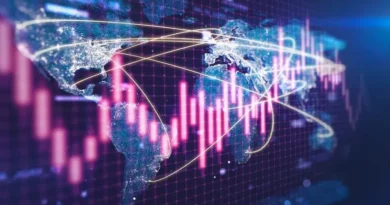Biden's green turn is a threat to Europe, here's why
Can Biden trigger a new energy crisis in Europe? The White House's latest decision on US LNG exports – so precious for the old continent – has legitimately generated doubt.
While fearing an extreme scenario, that of a shock in the supply of liquefied natural gas in the EU caused by Washington, the green turn of the Democrats in power is an alarm bell.
In essence, the focus is on the Biden administration's decision to suspend approval of new US LNG export licenses with the aim of carefully examining how shipments affect climate change, the economy and national security.
In fact, the moratorium will halt billions of dollars worth of projects in the sector.
In a context in which the supply strategy for energy raw materials is constantly evolving after the exclusion of Russia as a gas supplier, the stop to new LNG export plans to the USA is noteworthy news.
What could this mean for gas-hunting Europe? Biden stops LNG exports: what does this mean for Europe? Although comforted by gas prices clearly falling in the Dutch reference benchmark – below 30 euros per megawatt hour – Europe fears new blows to energy supplies in the medium to long term.
And the reason for these fears is in the USA.
The Biden administration will indefinitely suspend approvals for new liquefied natural gas export terminals along the US coast.
The decision represents a significant victory for environmental groups.
They and some Democratic lawmakers have for months pressured the US president to halt plans to build new LNG plants on the Gulf Coast, arguing that the expansion would have a detrimental effect on the climate, the US economy and local communities.
Specifically, the stop decided by the Department of Energy will temporarily stop the pending applications of 17 projects awaiting approval to proceed.
The novelty immediately took on global relevance.
The United States is the world's largest exporter of liquefied natural gas, with the number of cargoes shipped growing rapidly since the first one set sail from Louisiana in 2016.
Europe's energy crisis triggered by Vladimir Putin's invasion of Ukraine bolstered demand as countries sought to replace gas piped from Russia.
Last year the United States overtook Qatar and Australia to become the world's largest supplier of LNG, which is natural gas cooled and condensed so it can be transported cheaply on ships.
Its seven operational terminals can produce up to 87 million tonnes per year, enough to meet the combined gas needs of Germany and France.
Europe itself has benefited from US fuel in its desperate search to replace the Russian supplier.
In 2023 the role of liquefied natural gas has been increasingly relevant in the European energy mix and this graph from the Bruegel database demonstrates it.
The figure reveals the origin of monthly LNG imports into the EU from 2021 to 2023 and shows how the share from the USA (light blue color) has more than doubled in 2 years: US Energy Minister Jennifer Granholm stated that the suspension will not affect already authorized exports or gas exports to US allies, including Europe.
However, the alarm went off.
LNG advocates have harshly criticized the administration's decision, saying it would slow development and undermine U.S.
promises to help Europe replace Russian gas after it invaded Ukraine.
“The administration's decision to freeze review of new LNG terminals is deeply disturbing and raises significant risks around the world,” said Marty Durbin, president of the U.S.
Chamber of Commerce's Global Energy Institute.
“It betrays our allies at a time of geopolitical instability and could slow the energy transition.” While internal criticism is growing in the US, especially from the large companies involved in the now suspended projects, a certain concern is also growing in Europe.
In fact, from a medium-long term perspective, a smaller quantity of LNG available for the old continent could be a problem.
European countries are struggling to find a new balance in the energy mix disrupted by the war in Ukraine.
The USA has now become strategic partners, without which it would be difficult not to slip into an energy shortage.
The topic, however, is complex and calls into question not only energy security, but also environmental security.
Probably, the most far-sighted solution for Europe too is to invest more in renewable energy and enrich the mix of energy sources so as not to be overwhelmed by geopolitical crises and strategic choices of partner nations.
Biden's challenge between environment and LNG dominance “We will take an in-depth look at the impacts of LNG exports on energy costs, America's energy security and our environment.
This pause on new LNG approvals sees the climate crisis for what it is: the existential threat of our time”: this is how Biden explained the choice to suspend some approvals of projects linked to gas exports.
As the Energy Secretary pointed out, the scale of US gas exports has become so massive that they can no longer be ignored and has raised concerns about their impact on the country's carbon output, domestic gas prices and communities.
who live near the plants.
When the department conducted its latest gas export impact analysis in 2018, U.S.
LNG export capacity was less than 4 billion cubic feet per day, he said.
Today it has more than tripled and is expected to nearly double by 2030, he said.
The announcement came amid a sensitive backdrop, with Biden gearing up for a heated presidential contest against former President Donald Trump, who promised he would expand fossil fuels on his first day if he won.
Instead, Biden must balance two seemingly conflicting imperatives: persuading young, climate-concerned voters and reassuring foreign allies that the United States will continue to produce the fuels on which it depends.
Europe awaits developments.




